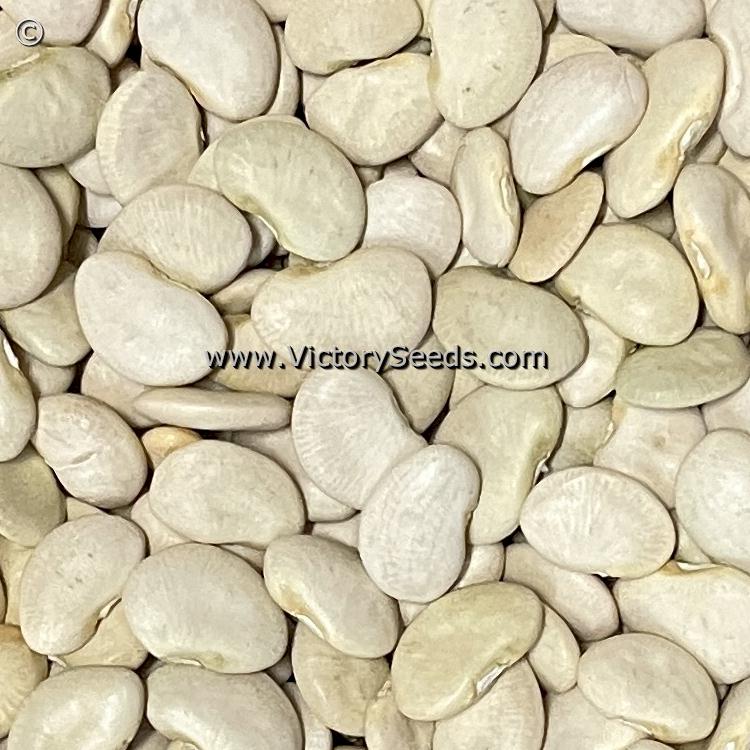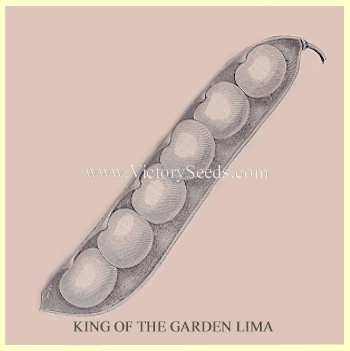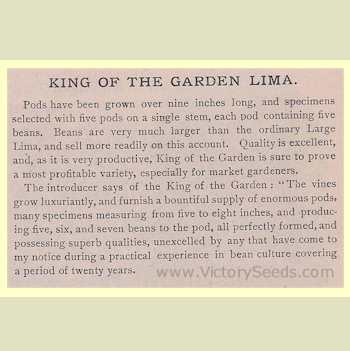King of the Garden Pole Lima Bean
King of the Garden Pole Lima Bean
Regular price
$3.27 USD
Regular price
Sale price
$3.27 USD
Unit price
per
Shipping calculated at checkout.
Couldn't load pickup availability
'King of the Garden'
102 Days — 'King of the Garden' is a very popular, old Lima bean variety. It has also been known as 'Platt's Improved', 'Platt King Lima' and 'Schwill's Monstrous Pole'. The vines can reach ten feet and are quite productive. The pods average five to eight inches long but some can reach up to nine inches. Each pod contains four to six large, cream colored beans.
Developed by Frank S. Platt (New Haven, Connecticut) from the old variety called 'Large White'. Through a process of "constant selection" for pods that produced five to six seeds each, he introduced 'King of the Garden' in 1883. Seeing the superiority of the variety, many seed companies began renaming and selling it.
'King of the Garden' has generally been used as a dry bean crop which means that it may not be the best choice for folks with shorter growing seasons. Pole-type plant. Each packet contains one ounce, which is approximately 25 seeds.
NOTE: Along with being the parent of 'King of the Garden', 'Large White' is presumed to be the progenitor of most, if not all, of the white seeded bush and pole Lima bean varieties. It was basically replaced by varieties such as 'King of the Garden', 'Henderson's Leviathan' and 'Seiberts'. It should also be noted that some seed companies and organizations are listing 'King of the Garden' and 'Henderson's Leviathan' as synonyms. They are actually individual varieties with different pedigrees.
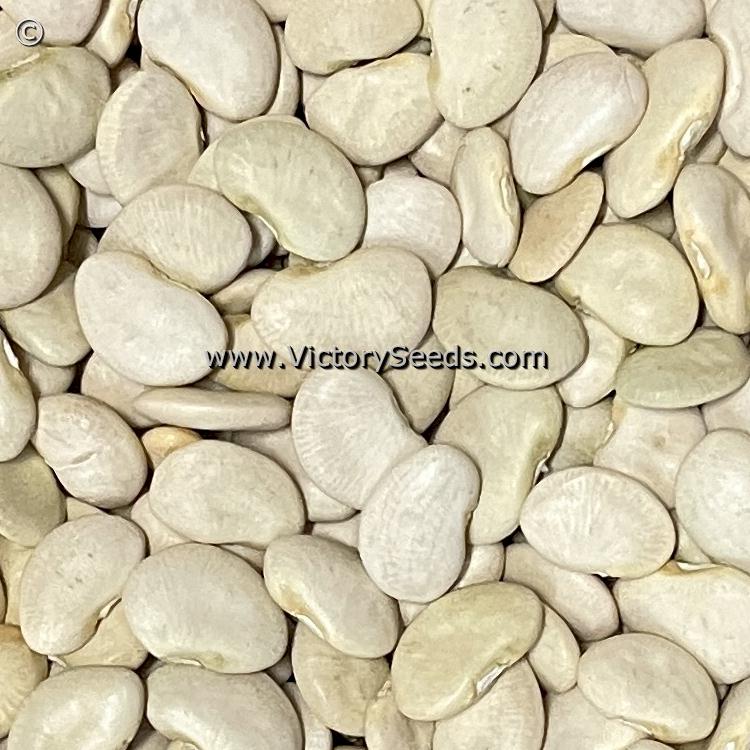
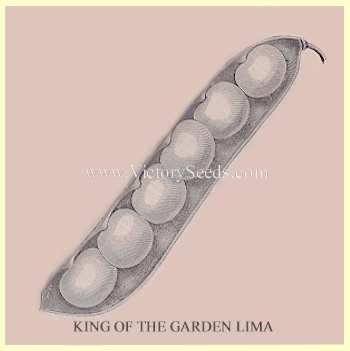
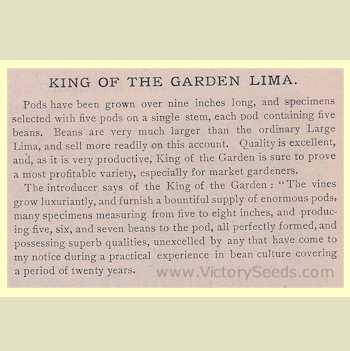
Planting Instructions:
Beans prefer well-drained, rich soil in a sunny location. Make sure that you keep them well watered in the summer heat.
Beans are tender and you should not plant them until all danger of frost has passed and the soil remains above 65ºF. Don’t bother trying to get an early start with beans – you’ll waste a lot of seed!
Sow seeds 1½ inches deep, every two to three inches. As they make efficient use of vertical space, provide a trellis. Use string or twine as wire will heat and burn the tender vines.
Harvest when the pods are plump, well-filled and firm, but still fresh and bright green in appearance. Can be used green shelled or dry and retains the markings after being cooked.
Beans are tender and you should not plant them until all danger of frost has passed and the soil remains above 65ºF. Don’t bother trying to get an early start with beans – you’ll waste a lot of seed!
Sow seeds 1½ inches deep, every two to three inches. As they make efficient use of vertical space, provide a trellis. Use string or twine as wire will heat and burn the tender vines.
Harvest when the pods are plump, well-filled and firm, but still fresh and bright green in appearance. Can be used green shelled or dry and retains the markings after being cooked.
Informational References:
- "Beans of New York: Being Vol. 1 - Part II of Vegetables of New York," U. P. Hedrick, New York State Agricultural Experiment Station, 1931, pgs. 88-89.
- "American Varieties of Garden Beans," W. W. Tracy, Jr., USDA Bureau of Plant Industry, Washington, D.C., Bulletin 109, pg. 48-48.
Explore our vegetable collections:
[ Artichokes | Asparagus | Beans | Beets | Broccoli | Sorghums | Brussels Sprouts | Cabbage | Cantaloupe | Carrots | Cauliflower | Celery | Collard Greens | Corn | Cucumber | Eggplant | Endives | Gourds | Kale | Kohlrabi | Leeks | Lettuce | Mesclun Mix | Mustard Greens | Okra | Onions | Parsley | Edible Pod Peas | Garden Peas | South Peas | Hot Peppers | Mild Peppers | Pumpkins | Radishes | Rapini | Rhubarb | Salad Greens | Salsify | Summer Squash | Winter Squash | Swiss Chard | Tomatillo | Tomatoes | Dwarf Tomato Project | Turnips | Watermelons ]

